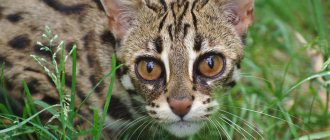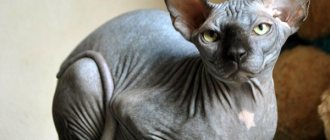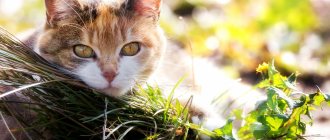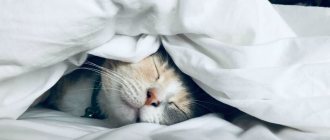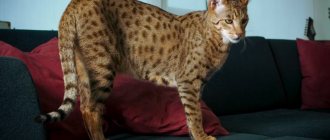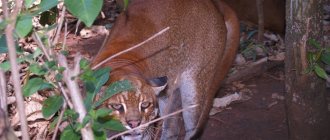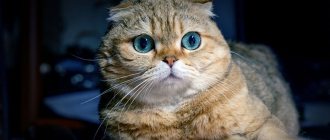Savannas and woodlands are specific natural zones that are located only in certain climatic zones. What features do they have?
The material was prepared jointly with a teacher of the highest category
Syrovatskaya Olga Viktorovna.
Experience as a geography teacher - 35 years.
Location
The natural zone of savannas and woodlands is located in the subequatorial zones of the Northern and Southern Hemispheres. They occupy almost 40% of the territory of Africa, northeast Asia, and there are separate areas in Australia. The plan for describing the savannah natural zone includes climate, soil, and features of flora and fauna.
Rice. 1. There are savannas on almost all continents
Notes
- In North America - “Tex-Mex grass low-grass and cactus-acacia savannas,” paragraph 24, p. 44 in the publication: Geographical Atlas. - M.: GUGK, 1982. - P. 44. - 238 p. - 227,000 copies, “...in the southern <part of the Mexican Highlands> savannas are common, where cereals and shrubs grow” in the publication: Great Geographical Encyclopedia / Scientific editor Dr. Lyuri D.I. - M.: OLMA-PRESS Education, 2006. - P. 370. - 640 p. — 3000 copies. — ISBN 5-94849-835-2.
| Class B | Arid (BWh, BWk) • Semiarid |
| Class C | Humid subtropical (Cfa, Cwa) • Oceanic |
| Class D | Humid continental (Dfa, Dwa, Dfb, Dwb) • Subarctic |
| Class E | Polar (ET,EF) • Alpine |
| World Ocean | Supralittoral zone | Intertidal zone: Mangroves | Subtidal zone | Neritic zone | Open Ocean Zone | Bathyal zone | Pseudobathic zone | Pseudoabyssal zone | Thalassobathial zone | Abyssal zone | Ultra-abyssal zone | Coral reefs | Continental Shelf | Pelagic zone | Ocean bottom | Depressions: Trench and Rift | Hydrothermal vents at mid-ocean ridges | Pack ice | Kelp forests | Estuary: delta and estuary |
| Biology – Geography – Ecology | |
Climate
Climatic features determine the development of flora and fauna in natural zones. The climate of the savannah and woodland zone is seasonally humid. There is a clear alternation between periods of rain and drought. This is due to the trade wind-monsoon air circulation.
Closer to the equator, the rainy season lasts up to 9 months. As you move away from the equator, the rainy period shortens to 3 months.
Slight seasonal temperature fluctuations are also typical for these areas. In summer, the rainy season begins here - the most favorable time for the steppes. The grass cover is growing rapidly, and animals are returning from their migration sites. In winter, the savannah is very dry, and the air temperature is approximately 21 degrees Celsius. In the depths of winter, savannas are prone to frequent fires.
The soil
The characteristics of the soil of savannas and woodlands are related to the rainfall regime. In the immediate vicinity of the equator there are red ferrallitic soils. As you move away from it, red-brown soils typical of savannas appear. Closer to the deserts, the soil becomes very poor, with a small amount of humus.
TOP 4 articles that are read along with this
- 1. Description plan: Eurasia
- 2. Description of the natural area according to plan (grade 7)
- 3. African fauna
- 4. Characteristics of natural areas of Africa
Literature
- When writing this article, material was used from the Encyclopedic Dictionary of Brockhaus and Efron (1890-1907).
- Geographical atlas. - M.: GUGK, 1982. - P. 44. - 238 p. — 227,000 copies.
- Educational atlas of the world. - M.: GUGK, 1980. - P. 12. - 180 p. — 275,000 copies.
- Small Atlas of the World. - 2006. - P. 20. - 192 p. — 10,000 copies. — ISBN 5-98522-011-7.
- Great Geographical Encyclopedia / Scientific editor Dr. Lyuri D.I. - M.: OLMA-PRESS Education, 2006. - P. 370. - 640 p. — 3000 copies. — ISBN 5-94849-835-2.
- World of Geography: Geography and Geographers. Natural environment / Editorial Board: Rychagov G.I. et al. - M.: Mysl, 1984. - P. 328-330. — 367 p.
Flora
Savannas and woodlands, despite the not very favorable climate, are inhabited by different species of animals and birds. Among them you can find:
- elephants;
- Lviv;
- zebras;
- giraffes;
- armadillos;
- antelope;
- rhinoceroses;
- ostriches;
- marabou.
All these animals and birds have adapted to the arid climate. But even they have to migrate to other areas when there is no water left in the savannah.
For many years, humanity exterminated these animals. Now there are fewer and fewer of them. For most animal species, reserves have been created to preserve them in nature.
Rice. 2. Savanna fauna
Myths about savannas
Myth 1: Savannahs are aggressive towards people. Actually this is not true. The myth is related to the fact that one of the ancestors of the savanna is the wild African serval. People mistakenly believe that being wild means aggressive. No. The African serval is not a large wild cat, and treats people with fear rather than aggression. Compared to the serval, humans are a larger species, which means they may pose a danger to the serval in their opinion. The attitude of wild servals towards humans is similar to anthropophobia (distrust of people). Savannah has diluted serval genes, that is, 50% serval genes if we are talking about the first generation, and less if we are talking about subsequent ones. The remaining genes are inherited from domestic cats, which are not characterized by anthropophobia. This is carefully monitored by a professional Savannah breeder. Therefore, a properly bred and raised savannah does not show aggression towards humans. Myth 2: Savannah attacks humans.
Savannahs, like any other breed of cat, rarely attack humans and always in response to provocation, in defense. Provocation of a person towards a cat can be anything, for example, imposing communication at a moment when the person has a desire, but the cat does not. A “cornered” cat with no way to escape can become unpredictable. All cats give some warning signs before attacking. Before attacking, the cat takes certain poses and/or makes characteristic sounds. If the owner listens to his cat, with proper training, good socialization of the cat and responsibility of the owner, the Savannah will not attack a person.
Myth 3: Savannah is inappropriate. (in reality - improper upbringing or unprofessional cultivation!)
The inadequacy of a cat of any breed or color or size is the merit of man. You can also grow an “inadequate” from a cute Scottish fold, which will throw itself at every passing foot. How can this happen? Elementary, several options... Owners allow the kitten everything while it is small and do not think about its upbringing, naively believing that the kitten can grow like a weed in the garden. Remember, a weed growing in the garden really does not require any labor from you to grow it. But a weed won’t turn into a sweet strawberry just because you want it to. Or... Owners do not think at the time of purchasing a kitten about the conditions in which it was raised, who its parents are, how well its parents correspond to their breed characteristics, including psychological ones, at what age the kitten was weaned from its mother, whether it was socialized breeder, etc. They only care about one thing - the price, the cheaper the better. So “virtue” people come to help such people - “divorcees” or #undocumentedforthreekopecks. And now you are already the “happy” owner of an “inadequate kitten”.
Myth 4: Savannah cats must be intimidated to prevent them from being aggressive towards people.
Most Savannahs are naturally submissive to humans - and do not need to be intimidated into submission. For example, our F1 Savannah cat, a breeding cat with raging hormones and the most dominant female in our cattery, turns into an innocent ball of fur and acts like a child when we play with her. As for the rest of the animals, Savannah does not accept tricks from anyone and makes it clear to all our cats that she is the head of the pack here. But as soon as she sees me, she trots towards me, “saying” something in her hybrid language, completely losing her image as a queen and forgetting about her dominant role in the nursery. At this moment, for me, she turns from a “cheetah” into a kitten.
Myth 5: Savannahs get sick often.
It's a lie. Savannah can have health problems due to improper care, nutrition and lack of vaccinations. They have fewer hereditary genetic diseases than other cat breeds. Typically, genetic diseases progress due to improper selection. Today, the savannah is a hybrid from the wild serval. Wild cats are known to be subject to very strict natural selection in nature. A sick kitten will not survive to reproductive age. Since the savannah is separated from the wild ancestor by only one or several generations, the risk of incorrect selection is minimized. Therefore, now we can safely say that the savannah has healthy generations. These cats have better health than any non-hybrid cat breeds.
But! You can spoil the health of a kitten during the process of raising it by using an incorrect diet and an irresponsible approach to vaccinating the kitten.
If you want to buy a healthy savannah, buy it from a professional nursery. The cost may be higher than “from hand”, from Avito or from a “fly-by-night breeder”, but you get a guarantee for the cat. In the person of a professional breeder, you will receive a permanent consultant in cat matters, and this, believe me, is very necessary. The health and character of an adult savannah will depend only on you - on the correct feeding, maintenance and upbringing.
Myth 6: The quality of Savannah kittens does not depend on the price. You can buy a Savannah kitten cheaper.
Nowadays, advertisements for the sale of savannahs “without documents” and below the market price are not uncommon. Is it worth purchasing such a pet, even if it is exactly the breed that you have wanted for a very long time? Of course, buying an F1 Savannah at a price that seems ridiculous compared to what a professional breeder is asking for is tempting. But very risky.
Is the low price of Savannah F1 a myth?
Yes. To obtain an F1 Savannah kitten, a breeder has to spend a lot of effort, time and money. Getting really high-quality kittens that will inherit all the necessary characteristics of their parents is quite a labor-intensive task. And, of course, it would be illogical on the part of the breeder to sell kittens for next to nothing after all these costs.
Sometimes buyers say: “We are buying a kitten for ourselves.” This is usually interpreted as “we want it cheaper”, which means without documents, it may be defective. Do you always buy the worst “for yourself”? Then you don't come to us. Because we have “For Ourselves” - the best and the realest, and only with documents certifying these qualities. Pedigree is not just a piece of paper and extortion of money, as many people think. Pedigree is a guarantee of all qualities that are instilled in a cat through competent selection.
Behind the “advantageous offer” there is always a catch - illness, behavioral defects, aggressiveness, timidity. Most often, eliminating these problems will require much more money, effort and time than if you buy a Savannah kitten from a professional breeder.
If you do not have enough funds to buy a Savannah kitten, contact the Benaby cattery, and we will select for you a kitten of another hybrid breed, according to your budget.
Myth 7: “Savannah doesn’t need to be trained. This is a smart cat, she understands everything right away!”
Any kitten needs to be trained. Savannah is a highly intelligent cat with a high ability to learn. What cats of other breeds need to be “explained” for a long time, the Savannah “grabs on the fly,” she simply likes to learn. Please note that they also learn bad things very quickly :). Remember, what your savanna will be like depends only on you. Cats look like their owners. Sometimes this similarity lies in very minor details. It is not surprising, because the character of a cat is formed by its owner, day after day raising a serious adult cat from a small kitten.
Fauna
The vegetation of savannas and woodlands is mainly herbaceous. It is represented by cereal plants, perennial herbs, and subshrubs. They grow rapidly in the savannah, occupying large areas of the territory.
Trees are rare and small in size. Often covered with vines and lichen.
The most characteristic tree of the savanna is the baobab. This is a tree with a thick trunk and a wide spreading crown that provides shade to animals. In Africa, a gigantic baobab grows almost 200 meters high, its trunk is 44 meters thick.
Rice. 3. The main tree of the savannah is the baobab

